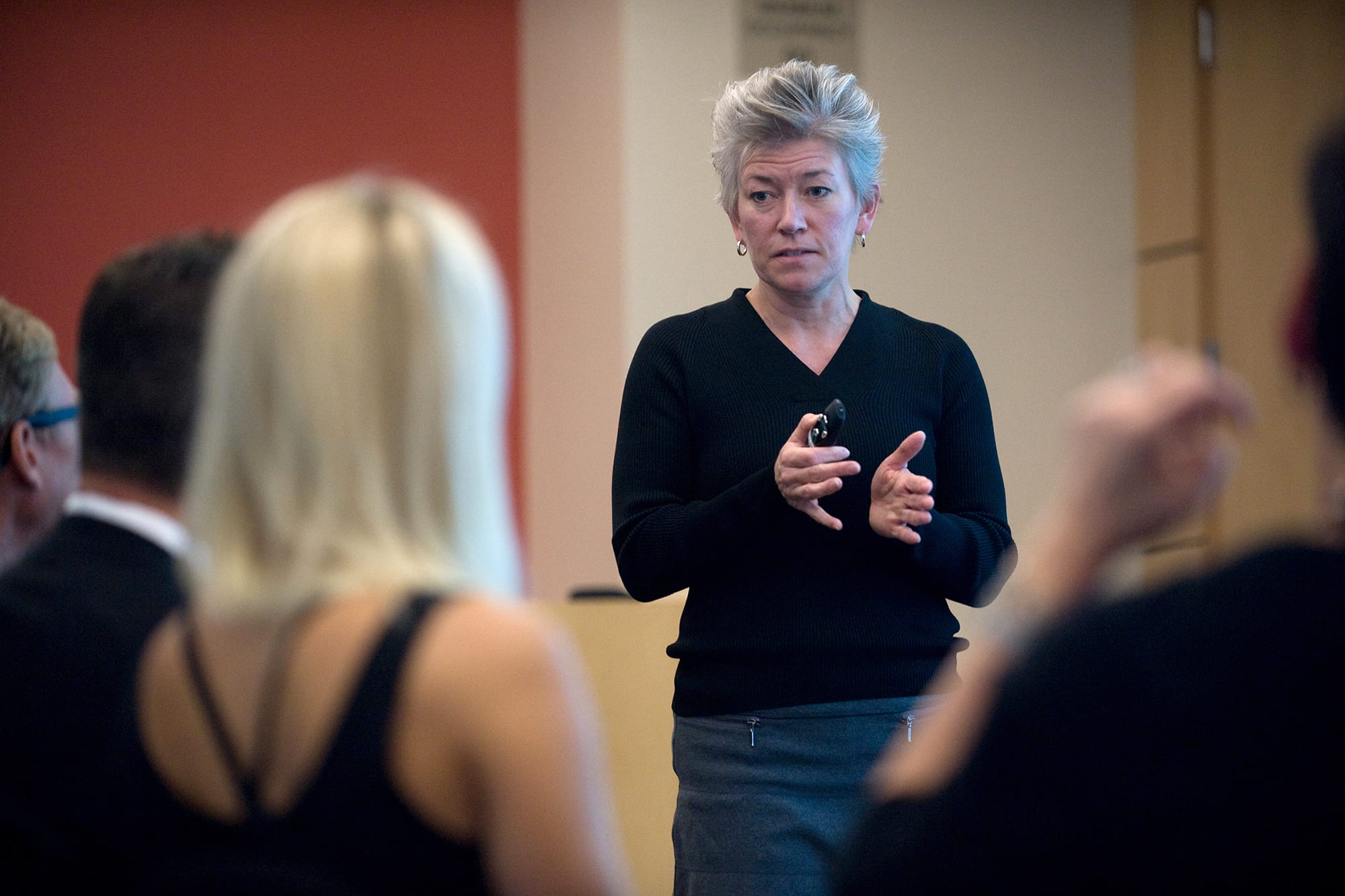New school of thought
First ‘active learning’ building in California opens at UCI

If it’s been a while since you were in college, the rules are changing: Students may now be required to talk to each other, check their cellphones or trade notes. Professors often no longer lecture from a podium. It’s all part of active learning, which flips traditional education on its head to maximize collaboration.
On Tuesday, the state’s first building entirely devoted to active learning opens at UCI. The Anteater Learning Pavilion adds much-needed classroom space to the fast-growing campus – and is wired for 21st-century education.
“The heart of everything that UCI does is to help all our students learn and flourish,” says Chancellor Howard Gillman. “This magnificent facility will do just that for generations to come.”
The 65,000-plus-square-foot structure features flexible furniture, multiple writing surfaces and wireless projection to optimize active learning. In 15 smart classrooms, old-school audiovisual equipment has been replaced by sleek computer screens on every wall and desk. Each can be linked to from laptop or mobile devices. Seats swivel for group exercises.
In American history courses, for example, students create an online frontier town from the 1800s. In neurobiology, they design mock clinical trials for a promising new dementia drug. And in science communications, they calculate how many elephants it would take to raise sea levels, compared with glacier melt.
“Many of our faculty no longer expect – or want – students to simply listen to lectures, take notes and memorize facts,” says Michael Dennin, vice provost for teaching and learning. “In order for our students to be prepared for a complicated and competitive world, they have to be ready to understand and demonstrate processes, analyze arguments and apply what they’ve learned to real-world situations.”
Midway through class, teachers often have students use iClickers, scratch-off quizzes and “Jeopardy!”-style games to gauge how well they’re registering key concepts. Important material can then be reinforced in real time.
Research shows that such engaged learning can help undergraduates – particularly first-generation and underrepresented-minority – retain knowledge better, earn higher grades and gain lifelong skills.
“It keeps you concentrating, rather than listening to a professor up front, so it stays in your mind longer,” says Ayushi Kamdar, 20, a business administration and psychology major.
“I like it. I’ve just had to get used to it,” adds Akif Khan, 20, a third-year cognitive sciences major. He and others in lecturer Jacqui Lewis’ abnormal psychology course were among the first to try out the classrooms during a trial run. They say it’s easier to see information on the pop-up desk monitors than on a screen at the front of the room – and simpler to do online searches. Working through knotty problems with classmates is also gratifying. “You feel immediate affirmation, and you can come together and find answers as a group,” Khan says.
He and the rest of his pod of six discovered online a new virtual reality therapy that enables people with schizophrenia to ground themselves and quell hallucinations by assigning avatars to handle them.
Lewis notes that the students had unearthed research so cutting-edge that it wasn’t yet in any textbook. The class then explored how this new therapy grew out of more traditional techniques, which led seamlessly to a discussion of topics that would be on the final exam.
While active learning programs elsewhere largely focus on science and engineering, UCI’s spans multiple disciplines – from dance, history and language to neurobiology, psychology, chemistry and more. The only other campus building in the U.S. wholly devoted to active learning is at Oregon State University, while a handful of colleges across the country have dedicated classrooms. UCI’s $67 million complex was constructed with $62 million in external financing and $5 million from campus coffers.
To receive priority to teach in the Anteater Learning Pavilion, instructors are required to complete an eight-week certification program on active learning techniques and technologies. Demand for the training is high, with a long waiting list. Those already certified give high marks to the new digs.
“Ridiculously awesome,” says Lewis, who taught the first class in the structure.


